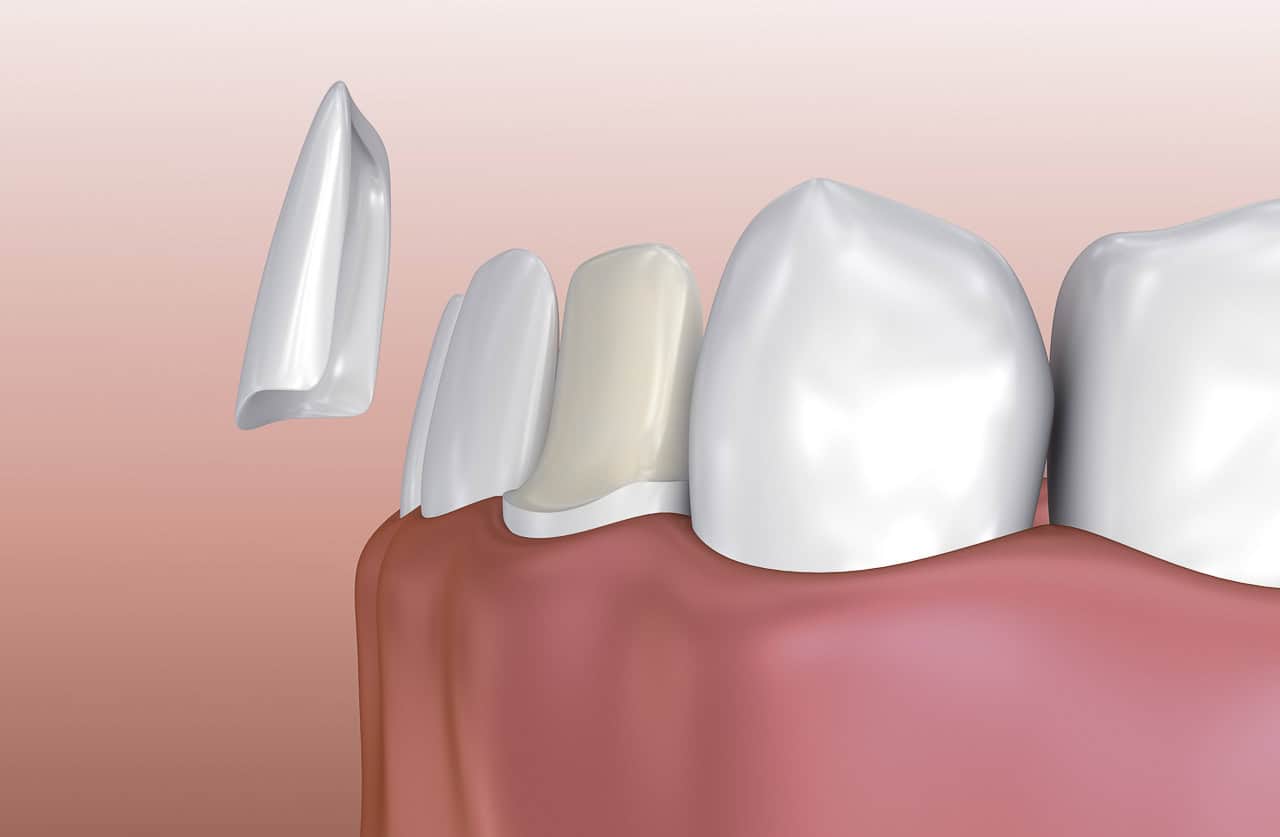
A dental veneer is a thin piece of porcelain that is used to change the shape, color, or size of a tooth or a group of teeth. Veneers are most often done on the front teeth of the upper and lower jaws, but can also be used for premolars (the teeth behind the canines) if the patient has a wide smile and the color difference would show.
While a veneer can technically be used as a restoration on a single tooth, it's rare to veneer a single tooth because getting the proper color match of a single veneer to your natural teeth is extremely difficult. In these cases, an all-ceramic crown may be a better option.
Patients who want to straighten their teeth or change the position of their teeth often ask whether treatment with veneers can be used instead of orthodontic treatment. The answer is "it depends." In dentistry, we have a number of techniques and treatment options that we can use to achieve a goal, and each patient's needs and goals are different. For example, if someone has extensive crowding of their teeth along with severe rotations of their teeth, then orthodontic treatment may be the best choice. In the case of a patient with a single front tooth that is too far forward or back, Invisalign might be a better option because you would need to prepare (drill) multiple teeth to get the same effect with veneers. If a patient, however, has multiple discolored teeth with slight rotations or irregular heights, then treatment with veneers might be a good choice.
Like any dental restoration, veneers don't last forever. But with proper home care and maintenance, veneers can last for a decade or longer.